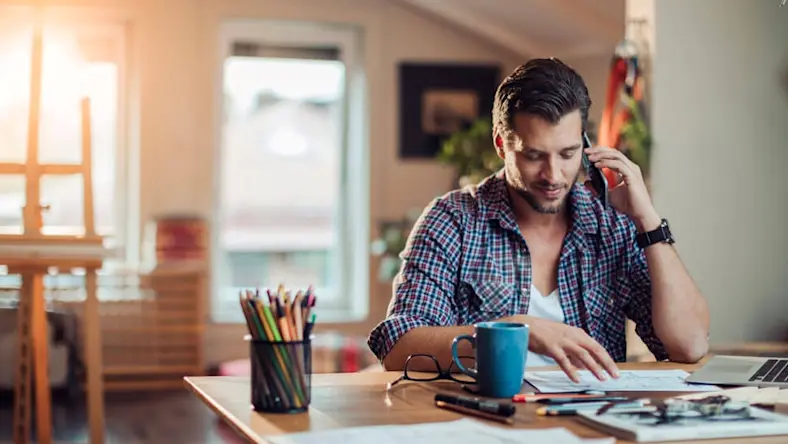& Construction

Integrated BIM tools, including Revit, AutoCAD, and Civil 3D
& Manufacturing

Professional CAD/CAM tools built on Inventor and AutoCAD
Before 2020, when people visited a museum, attended a concert or sporting event, went shopping, or simply commuted to work, they probably never thought much about what it took to ensure the experience was safe. People took for granted the ability to move confidently within their environments and didn’t often pay attention unless something was amiss: crowding, long lines, an out-of-service elevator, a fire alarm.
It takes a considerable amount of forethought to ensure that groups of people can move around safely. That planning requires an understanding of math, biomechanics, data science, design, demographics, psychology, local regulations, sociology, and geography, among other disciplines. Designing for social distancing requires an ability to consider thousands of factors and analyze many different types of data about what people do and the roles they play in physical spaces, whether they are institutional environments such as schools, offices, and hospitals or social environments such as stadiums and tourist attractions.
“Before the pandemic, we’d be looking at how to reduce congestion to make crowded environments safer and ensure people have a positive experience,” says Dr. Aoife Hunt, associate director at Movement Strategies, a people-movement consultancy based in London. “And then, at the start of lockdown, the focus changed.”
Movement Strategies is primarily known for its work assessing large-crowd dynamics at locations such as tourist attractions, sports stadiums, offices, and retail spaces. In early 2020, Hunt says: “We looked ahead to our summer and our work with football and Wimbledon and music festivals, and we thought, ‘Goodness, all these crowded events are just not going to happen this year.’ But now the problem of people movement has become a really critical issue of safety and reducing risk of transmission of the virus. So understanding how to lay out spaces and how to organize for people movement has actually moved up the agenda. And there’s been a bit of a spotlight on our little niche world.”
Today, some locations that faced early COVID-19 surges are returning to a semblance of normalcy; some remain closed; and many fluctuate between the two stages, often on extremely short notice. While no one knows when the pandemic will end, a few clear lessons and imperatives have emerged: Spaces where people can congregate—offices, construction sites, schools, retail spaces, warehouses—need to be designed to reduce the risk of viral transmission. They need to be built with enough flexibility to accommodate rapid changes. And it all has to happen in a way that satisfies a range of critical health, financial, psychological, and organizational needs, as well as core life-safety concerns such as the potential for fire and natural disaster.
One of the most challenging aspects of designing for social distancing is its incongruity with social norms. “Probably the fundamental thing is that previously, in terms of spatial planning, we used to do a lot of work to bring people together and socialize,” says Pete Thompson, principal engineer at Autodesk. “It’s almost like we’re doing the reverse now; we’re deliberately keeping people apart. Trying to get that balance of safety while enabling some sort of socialization is tricky.”
To accomplish this balance requires a different approach. “We have moved from trying to set the maximum occupancy levels at a population level to influencing how people behave at an individual level,” adds Prof. Steve Gwynne, research lead at Movement Strategies.
One thing that makes COVID-19 so challenging from a medical standpoint is that it is a novel virus. Generally speaking, human bodies have no natural immunity. And that lack of biological immunity requires people to protect themselves against transmission, which has a downstream effect: They are behaving in largely unprecedented ways.
A May 2020 article by Will Douglas Heaven in the MIT Technology Review illustrated the dizzying changes during a single week at the end of February: “When COVID-19 hit, we started buying things we’d never bought before. The shift was sudden: The mainstays of Amazon’s top 10—phone cases, phone chargers, LEGO—were knocked off the charts in just a few days.” And they were replaced by a familiar litany of post–COVID-19 staples such as toilet paper, face masks, hand sanitizer, paper towels, and the like.
These behavioral changes affected business systems, too, “causing hiccups for the algorithms that run behind the scenes in inventory management, fraud detection, marketing, and more,” Heaven continued. “Machine-learning models trained on normal human behavior are now finding that ‘normal’ has changed, and some are no longer working as they should.”
Despite what you may see when you run to the grocery store, designing for social distancing isn’t as simple as marking out 2 meters or 6 feet on a sidewalk. The ways people occupy physical space have changed multiple factors that must be accounted for.
One constant in all of this change is that effective design depends on context, whether you’re considering an office environment, a sporting event, a concert, or a school. “We consider the social factors, so our analysis is in context with the space and environment in which it occurs,” Gwynne says. “So those skills and that view of looking at how people use the space is actually pretty well suited to the new challenges. You can’t take the parameters or the behaviors or the influences for granted; you have to seek them out and then put them together in a network, a spider’s web of factors that then allow you to do the analysis.”
That means understanding new changes to design parameters, new planning objectives, and the pitfalls that arise when designing for unprecedented times.
As in any project, the first step in designing for social distancing is to define the relevant parameters that describe the environment. The building blocks of designing for social distancing are:
Level of social distance in place. Recommended social distance varies based on the type of infectious agent and the local jurisdiction.
Relative occupant density. The number of people allowed to occupy a particular space will vary based on how they occupy that space: standing, sitting, walking, or queuing.
Traffic-flow rate. The speed at which people are able to move in aggregate.
Traffic speed. How quickly people typically move. This varies based on activity, environment, and other factors.
Direction. The direction in which people typically move: one direction, two directions, or bidirectionally.
Factors that influence those parameters include:
Occupancy activity and behavior. The activities that occupants are performing and the way occupants behave have a significant impact on design parameters—and are, to some extent, unpredictable. For example, are people sitting quietly in an office; moving about a construction site; or standing, jumping, and yelling at a concert or sporting event?
Social distance threshold. Recommended social distance is defined by the local authority that has jurisdiction over the building. In the case of COVID-19, the general distance recommendation is 2 meters, or 6 feet, but different infectious agents with different transmission patterns and severities may require different thresholds.
Movement patterns. How quickly do people move? Do they move in groups, individually, or in a combination of patterns? What is the impact of conditions that may affect mobility, such as weather, cultural norms, and disability?
Spatial configuration. This can include attributes such as walkways, furniture, partitions, and so on.
Design goals depend on the type of building or public space under consideration. When designing for social distancing, the primary goal is to reduce the risk of virus exposure and transmission by minimizing the proximity, frequency, and duration of social interactions.
“The kind of assessment that we do looks at exactly how a site is used,” Hunt says. “This means collecting data on how people arrive, how they move around, and how they circulate and then trying to understand how we can increase the number of people in that system safely by running different simulations of what might happen in different scenarios.”
“Also, you need to take into account some of the social factors in order to understand how you can maintain that distancing,” Gwynne says. “For instance, do people move as individuals or in groups? What are people doing at a particular location, and how does that influence the space around them? What type of communication is required in a particular space? In a classroom, it might be that the teacher needs to speak to a room of people such that they can see them. In an office, it may mean that someone needs to walk around and communicate with someone else in a safe location. So you have to understand the social dynamics, both to design your system but also to have an objective to ensure that some degree of social interaction and communication is still possible.”
Planning for social distancing means avoiding a number of common pitfalls:
Forgetting that bodies occupy space. When measuring for social distancing, designers often underestimate the total distance from person to person. What we call “social distance” is actually contact (edge-to-edge) distance, so when planners design grids or distance markers on the sidewalk, they need to account for the actual space taken up by people.
Disregarding the time factor. It’s important to consider potential exposure time as well as safe spacing, particularly if geometry dictates that the occasional, brief incursion of social distance is unavoidable.
Assuming traffic speeds are constant. Not everyone moves at the same speed; discrepancies have a big impact on maintaining compliance in lane-based movement.
Overlooking secondary impacts. The design of one building may affect social distancing in adjacent areas (on the street, at stations, and so forth). For example, a long line outside a shop may affect other lines at other shops.
And then there is the unpredictability of human behavior. What happens when people, either intentionally or unintentionally, don’t observe the new rules of movement and distance? “The general approach to design is to at least make sure that the building has the capacity to support the kind of movement that you want,” Thompson says. “It’s ultimately up to people if they follow the signs and observe the guidance. The primary approach is that you at least provide the capacity and the capability in the space available for people to do what they should be doing.”
Designing for social distancing needs to account for cultural norms and human behavior: understanding what people want to do and designing for the ways they use those spaces. “Now, there’s this extra dimension of social distancing, but a design still has to be fit for purpose,” Hunt says. “It still has to accommodate people’s needs, and that’s such a challenge because theoretically you can lay any area out in a modular way to make everyone safe. But the experience is really important. Without understanding behavior and the expectations for experience, it’s just throwing numbers in the air.”
For more insight on designing for social distancing, watch this webinar.
Susan Etlinger is a globally recognized expert in digital strategy, with a focus on artificial intelligence, technology ethics, and data. She is director, AI & Innovation, at Microsoft and a senior fellow at the Centre for International Governance Innovation. Her TED talk entitled “What Do We Do With All This Big Data?” has been translated into 25 languages and has been viewed more than 1.3 million times.
Executive insights
Executive insights
PD&M






